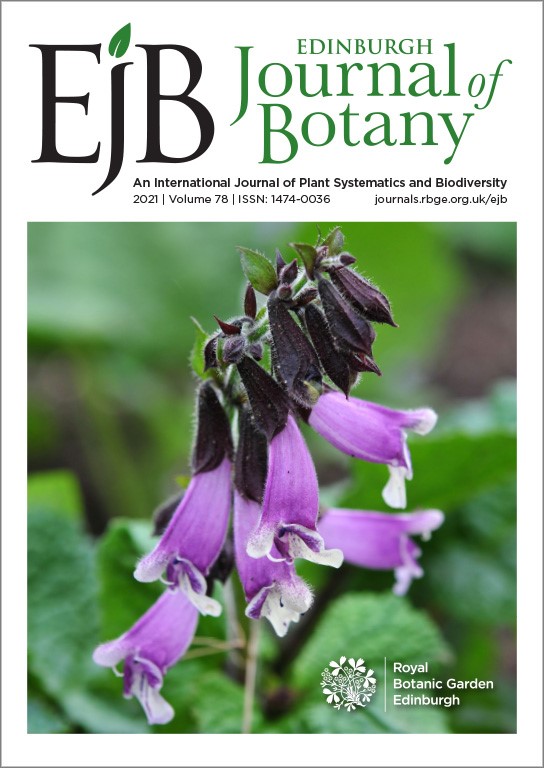The Edinburgh Journal of Botany was established in 1900 by the then Regius Keeper of the Royal Botanic Garden (RBGE), Isaac Bayley Balfour. Published under the title, Notes from the Royal Botanic Garden Edinburgh, it was published by His/Her Majesty’s Stationary Office (HMSO) to “report upon …. scientific investigations carried on in the Garden, and notices of points of interest relating to plant-life…”. Over the following 90 years the ‘Notes’, as it was widely known, built a reputation for publishing scientific papers of the highest quality from researchers across the world.
In 1990 Editors, Brain Coppins and Norma Gregory, in response to the journals international reputation and evolving scientific scope, changed its name to the Edinburgh Journal of Botany, an international journal of plant systematics and biodiversity. At this time the journal also moved to Cambridge University Press and to publishing three issues each year.
The last decade has seen revolution in the availability of information on the internet and in the last few years there has been major initiatives to move journals to open access publishing. In response, the Edinburgh Journal of Botany (EJB) is now being published by RBGE as an online only journal, hosted by the University of Edinburgh’s journal-hosting service. As part of this development the journal is now using the Diamond Open Access model in which it continues to publish high-quality, peer-reviewed scientific papers on plant systematics and biodiversity without cost to authors, but they will now be free to access online at https://journals.rbge. org.uk/ejb
These changes have also provided an opportunity to move EJB to an online submission process and to update and refresh its branding and style, and its editorial committees. Some changes are in response to the needs of online-only publication, whereas others aim either to increase accessibility and diversity or to speed up the review, editing and publication process.
During the current COVID-19 pandemic, with many people in lockdown, the need to access information online is greater than ever. In moving EJB to online-only publication and Diamond Open Access we are making world-class biodiversity information freely available to a wider range of readers, including independent researchers and, especially, researchers from lower income countries.
This is an exciting time for EJB, and many more new developments will be taking place over the coming months and years. To be kept up to date with these developments why not follow the journal on twitter @EJBotany
Peter Wilkie
Editor-in-Chief



